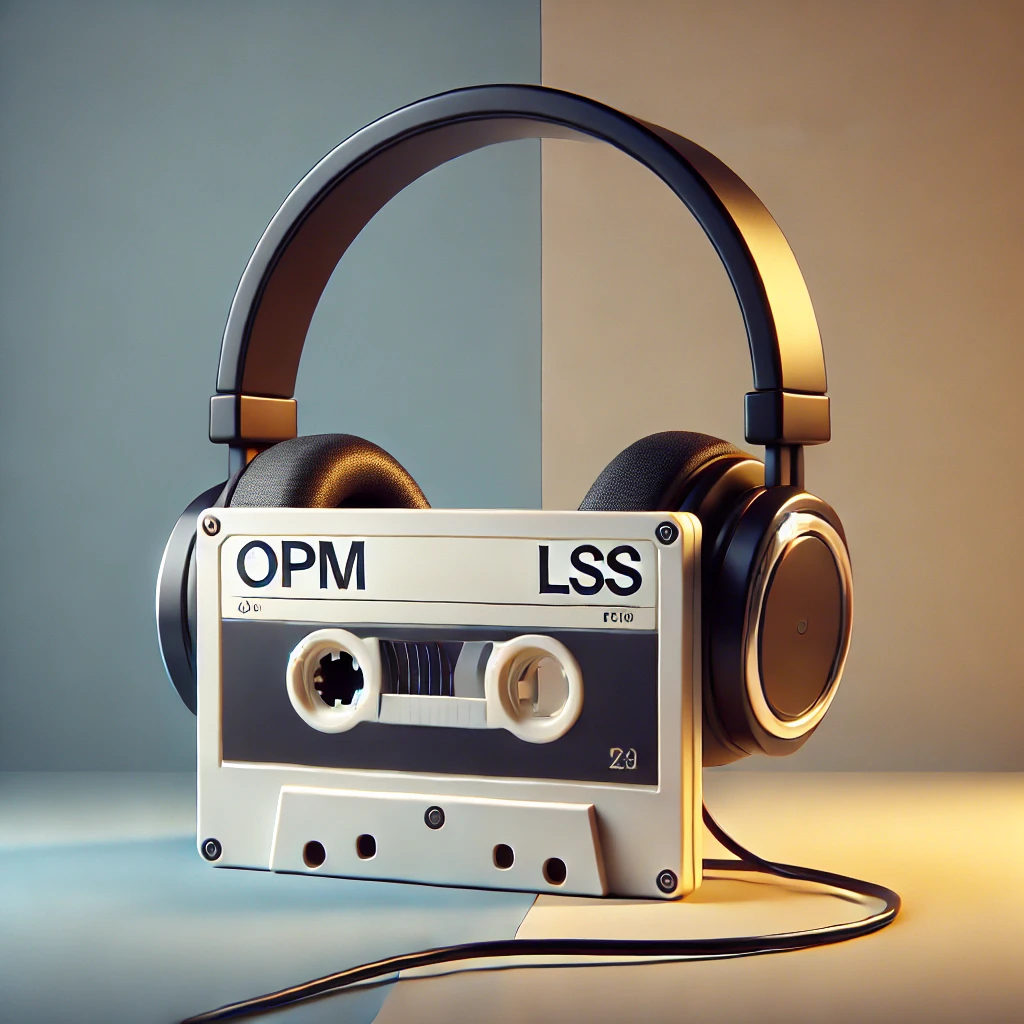Kumusta, mga ka-music lovers! Mimi Ramos here, ready to dive into the world of OPM LSS hits that just won’t quit! You know those tunes that stick in your head like bubblegum on your favorite sneakers? Yup, we’re talking about those epic Last Song Syndrome tracks that have us humming, singing, and sometimes even dancing in public (don’t deny it, I’ve seen you!).
Today, we’re taking a musical journey through the catchiest OPM hits that have become the soundtrack to our lives. From classic bops that our titos and titas still groove to, to the freshest tracks burning up TikTok, we’re covering it all. So grab your earphones, crank up the volume, and let’s explore the infectious world of OPM LSS!
The Power of LSS in Pinoy Music
What Makes a Song Stick?
Ever wondered why some songs just refuse to leave your brain? It’s not magic (though some of these artists are definitely magicians with melodies). There’s actually some science behind why certain tracks become LSS material. Let’s break it down:
- Catchy Melodies: The heart of any LSS hit is a melody that’s easy to remember and hard to forget. Think of “Salamat” by The Dawn or “Tadhana” by Up Dharma Down. These tunes have a way of worming into your ear and setting up camp.
- Repetitive Hooks: Repetition is key in creating an LSS. “Ang Huling El Bimbo” by Eraserheads is a prime example. That iconic chorus? It’s practically tattooed on the Filipino musical psyche.
- Relatable Lyrics: When words hit close to home, they stick. “Hanggang Kailan” by Orange and Lemons isn’t just a song; it’s a shared experience of love and longing that resonates with so many of us.
- Emotional Connection: Songs that tug at our heartstrings tend to linger. “Kahit Kailan” by South Border? It’s not just a ballad; it’s a emotional time machine that transports us back to our first heartbreak.
- Cultural Relevance: OPM hits often reflect our shared experiences as Filipinos. “Manila” by Hotdog isn’t just a song; it’s a love letter to our chaotic, beautiful capital that every Manileño can relate to.
The LSS Effect on Filipino Culture
LSS hits aren’t just fun to sing; they’re cultural phenomenons that shape our collective musical identity. These songs become more than just tracks on a playlist – they’re the backdrop to our lives, the lingua franca of Filipino music lovers everywhere.
Think about it: How many times have you bonded with a stranger over a shared love for an OPM hit? Or found yourself in an impromptu karaoke session with friends, belting out “Ang Huling El Bimbo” like your life depended on it? These LSS tracks are the glue that binds us, creating shared experiences and memories that transcend age, background, and even geography.
From jeepney rides where the entire vehicle erupts into song when an LSS hit comes on the radio, to family gatherings where three generations can sing every word to “Kahit Maputi Na Ang Buhok Ko”, these songs are the unofficial soundtrack of Filipino life.
The Evolution of OPM LSS Hits
From Classic to Contemporary
The beauty of OPM is its ability to evolve while still honoring its roots. Let’s take a musical journey through the decades and see how our LSS hits have transformed:
- 70s-80s: The foundation of modern OPM. Think of the disco-infused “Awitin Mo at Isasayaw Ko” by VST & Company or the soul-stirring “Anak” by Freddie Aguilar. These songs laid the groundwork for what OPM could be – catchy, meaningful, and undeniably Filipino.
- 90s: The golden age of Pinoy rock. Bands like Eraserheads, Rivermaya, and Parokya ni Edgar dominated the airwaves with hits that we’re still singing today. “Ligaya,” “Kisapmata,” “Harana” – these aren’t just songs; they’re time capsules of an era.
- 2000s: The rise of pop and R&B influence. Artists like Sarah Geronimo (“Tala”), Bamboo (“Hallelujah”), and Kamikazee (“Narda”) showed the versatility of OPM, blending international sounds with distinctly Filipino storytelling.
- 2010s to Present: The digital age of OPM. With streaming platforms and social media, artists like Ben&Ben (“Kathang Isip”), Moira Dela Torre (“Tagpuan”), and December Avenue (“Sa Ngalan ng Pag-ibig”) are reaching wider audiences than ever before, creating a new generation of LSS hits.
Table: Evolution of OPM LSS Hits
| Decade | Defining Characteristics | Example Songs |
|---|---|---|
| 70s-80s | Disco influence, nationalistic themes | “Awitin Mo at Isasayaw Ko” (VST & Company), “Anak” (Freddie Aguilar) |
| 90s | Rise of Pinoy rock, alternative sound | “Ligaya” (Eraserheads), “214” (Rivermaya) |
| 2000s | Pop and R&B fusion, diverse genres | “Tala” (Sarah Geronimo), “Narda” (Kamikazee) |
| 2010s-Present | Digital distribution, indie influence | “Kathang Isip” (Ben&Ben), “Buwan” (Juan Karlos) |
The Anatomy of an OPM LSS Hit
Breaking Down the Earworms
What makes a song go from a simple tune to an LSS phenomenon? Let’s dissect some of OPM’s most notorious earworms:
- “Ang Huling El Bimbo” by Eraserheads
- Catchy Riff: That opening guitar riff is instantly recognizable.
- Storytelling Lyrics: A nostalgic tale that resonates with many Filipinos.
- Memorable Chorus: “Magkahawak ang ating kamay…” – need I say more?
- “Kilometro” by Sarah Geronimo
- Upbeat Tempo: Gets your feet tapping from the first beat.
- Repetitive Hook: “Dadalhin ka niya sa’n man niya gusto” – simple, but it sticks.
- Relatable Theme: Who hasn’t felt the rush of a new love?
- “Kahit Ayaw Mo Na” by This Band
- Emotional Delivery: The raw vulnerability in the vocals tugs at the heartstrings.
- Simple Yet Profound Lyrics: “Kahit ayaw mo na, ipilit ko pa ba?” – a question we’ve all asked ourselves.
- Melodic Simplicity: Easy to sing along to, making it perfect for those late-night hugot sessions.
- “Alapaap” by Eraserheads
- Iconic Intro: Those first few notes are enough to get a crowd going.
- Metaphorical Lyrics: Open to interpretation, which keeps listeners coming back.
- Energy: The overall vibe of the song is infectious, making it a staple of Filipino rock.
The New Wave of OPM LSS
Fresh Beats, Timeless Appeal
The OPM scene is constantly evolving, and with it comes a new generation of LSS hits that are capturing hearts (and ears) across the nation. Let’s spotlight some of the recent tracks that have been on repeat in our collective consciousness:
- “Tahanan” by Adie
- This soulful ballad has become the unofficial anthem for long-distance relationships and homesickness. With its heartfelt lyrics and Adie’s emotive delivery, “Tahanan” reminds us that home isn’t always a place – sometimes it’s a person.
- “Binhi” by Arthur Nery
- Nery’s smooth vocals and the song’s jazzy undertones make “Binhi” a standout in the current OPM landscape. It’s the kind of track that has you swaying without even realizing it, with lyrics that paint a vivid picture of love’s potential.
- “Paraluman” by Adie
- Another hit from Adie that showcases his talent for crafting melodic earworms. “Paraluman” blends poetic lyrics with a catchy chorus that’s hard to shake off. It’s become a favorite for cover artists and karaoke enthusiasts alike.
- “Pagsamo” by Arthur Nery
- This track’s blend of R&B and pop elements, coupled with Nery’s sultry vocals, has made it a mainstay on playlists and radio stations. The song’s plea for reconciliation resonates with anyone who’s ever longed for a second chance in love.
Table: New Wave OPM LSS Hits
| Song Title | Artist | Release Year | Notable Features |
|---|---|---|---|
| “Tahanan” | Adie | 2021 | Emotional ballad, relatable lyrics |
| “Binhi” | Arthur Nery | 2021 | Jazzy undertones, smooth vocals |
| “Paraluman” | Adie | 2021 | Poetic lyrics, catchy chorus |
| “Pagsamo” | Arthur Nery | 2021 | R&B/pop fusion, emotive delivery |
These tracks showcase the diversity and talent in the current OPM scene. They prove that while the sound of Filipino music may evolve, its ability to create lasting impressions and become part of our daily soundtrack remains stronger than ever.
The Role of Social Media in OPM LSS
From TikTok to Stardom
In the age of social media, the way we consume and share music has dramatically changed. Platforms like TikTok, Instagram Reels, and YouTube have become powerful tools in propelling songs to LSS status. Here’s how social media is shaping the OPM LSS landscape:
- TikTok Challenges: Songs like “Binibini” by Zack Tabudlo gained massive popularity through TikTok dance challenges. These viral moments turn catchy hooks into cultural phenomena overnight.
- Cover Culture: Platforms like YouTube have given rise to a thriving cover culture. Artists like Moira Dela Torre often gained initial recognition through their unique renditions of popular songs before releasing their own LSS-worthy hits.
- Lyric Videos: Simple yet effective, lyric videos on YouTube help songs become more memorable. Tracks like “Ikaw at Ako” by Moira and Jason Marvin benefited from fans being able to easily learn and sing along to the lyrics.
- Behind-the-Scenes Content: Artists sharing the creative process behind their music on Instagram or Twitter creates a deeper connection with fans, making the songs more meaningful and memorable.
- Spotify Playlists: Curated playlists on streaming platforms can catapult a song to LSS status by increasing its exposure to a wider audience.
The Viral Effect on OPM
The viral nature of social media has changed the game for OPM artists. A single post, video, or challenge can turn a relatively unknown track into the next big LSS hit. This democratization of music promotion has allowed for a more diverse range of artists and styles to reach listeners, enriching the OPM landscape.
However, it’s not just about going viral. Social media has also allowed for more intimate connections between artists and fans. Live streams, Q&A sessions, and direct interactions have made fans feel more invested in an artist’s journey, making their songs more impactful and memorable.
LSS as a Reflection of Filipino Society
More Than Just Catchy Tunes
OPM LSS hits aren’t just about getting stuck in our heads; they’re often a mirror reflecting the current state of Filipino society. Let’s explore how some of these earworms capture the Filipino experience:
- Social Commentary: Songs like “Tatsulok” by Bamboo address social inequalities, becoming anthems for change that resonate long after the last note.
- Cultural Pride: “Pinoy Ako” by Orange and Lemons celebrates Filipino identity, fostering a sense of national pride that sticks with listeners.
- Modern Love: Tracks like “Gitara” by Parokya ni Edgar humorously capture the awkwardness and charm of Filipino courtship in the digital age.
- Urban Life: “Manila” by Hotdog paints a vivid picture of life in the capital, encapsulating the love-hate relationship many Filipinos have with the city.
- Overseas Filipino Experience: “Hawak Kamay” by Yeng Constantino touches on the sacrifices of OFWs, resonating deeply with families separated by distance.
These songs become LSS hits not just because of their musical qualities, but because they speak to shared experiences and emotions that define what it means to be Filipino in different eras.
The Future of OPM LSS
What’s Next for Pinoy Earworms?
As we look to the future of OPM, it’s exciting to imagine what the next generation of LSS hits might sound like. Here are some trends and predictions:
- Genre Blending: Expect more tracks that defy easy categorization, blending elements of rock, pop, hip-hop, and even traditional Filipino music.
- Collaborative Tracks: We’re likely to see more collaborations between established OPM artists and up-and-coming talents, creating intergenerational LSS hits.
- Global Influence: With Filipino artists gaining international recognition, future OPM hits might incorporate more global sounds while maintaining their distinctly Filipino essence.
- Tech-Driven Creation: AI and other technological advancements might play a role in crafting the perfect earworm, though the heart and soul of OPM will always be human creativity.
- Social Consciousness: As younger generations become more socially aware, we can expect more LSS hits that not only entertain but also inspire and provoke thought.
The Endless Loop of OPM LSS
As we wrap up our deep dive into the world of OPM LSS, one thing is clear: these songs are more than just catchy tunes. They’re the soundtrack to our lives, the shared language of our musical experiences, and a testament to the incredible talent and creativity in the Filipino music scene.
From the classics that have stood the test of time to the fresh hits making waves on TikTok, OPM LSS tracks continue to evolve, reflecting the changing face of Filipino culture while staying true to the emotions and experiences that make us who we are.
So the next time you find yourself humming “Ang Huling El Bimbo” in the shower or catching yourself dancing to “Tala” while waiting for the bus, remember – you’re not just enjoying a catchy song. You’re participating in a rich, vibrant musical tradition that connects Filipinos across generations and around the world.
Keep those playlists updated, support your favorite OPM artists, and who knows? Maybe the next big LSS hit is just around the corner, waiting to get stuck in our heads and hearts for years to come.
Disclaimer: This article reflects the opinions and analysis of the author based on their knowledge and research of the OPM industry as of September 2024. Music tastes are subjective, and what constitutes an “LSS hit” may vary from person to person. If you notice any inaccuracies or have additional insights about OPM LSS hits, please don’t hesitate to reach out so we can ensure the most up-to-date and comprehensive coverage of this dynamic aspect of Filipino music culture.




